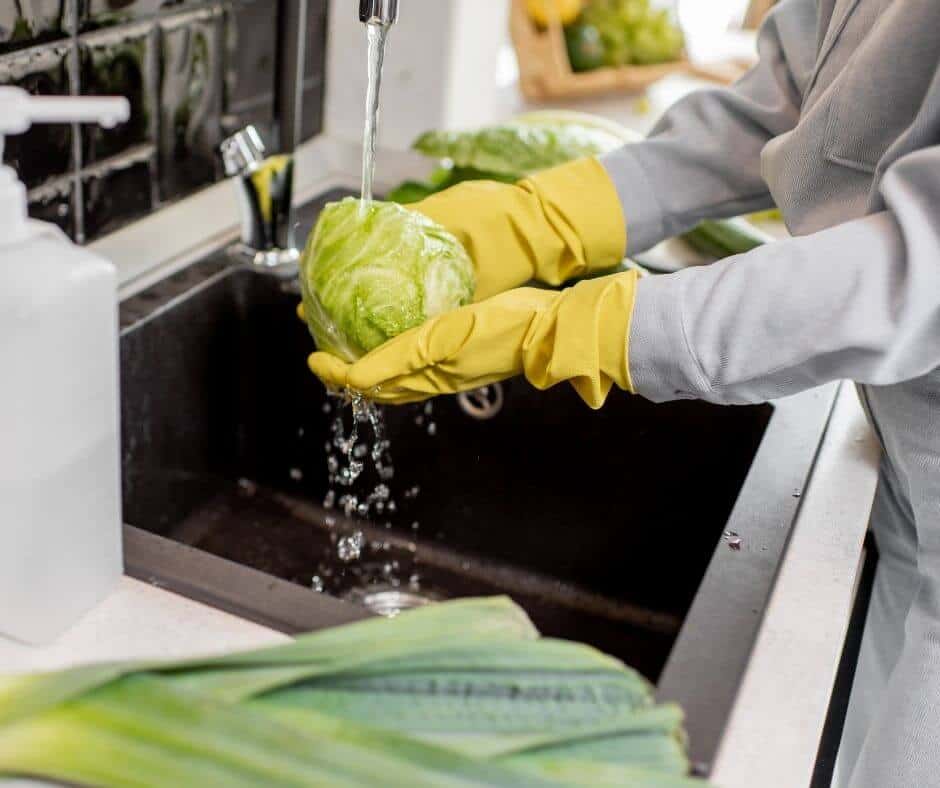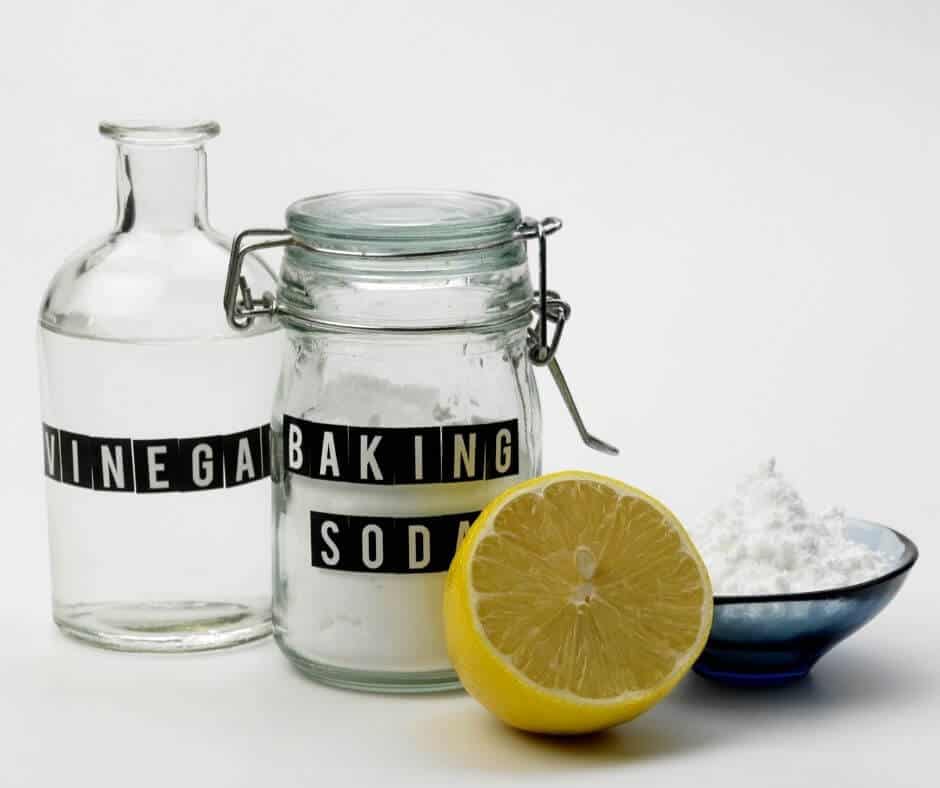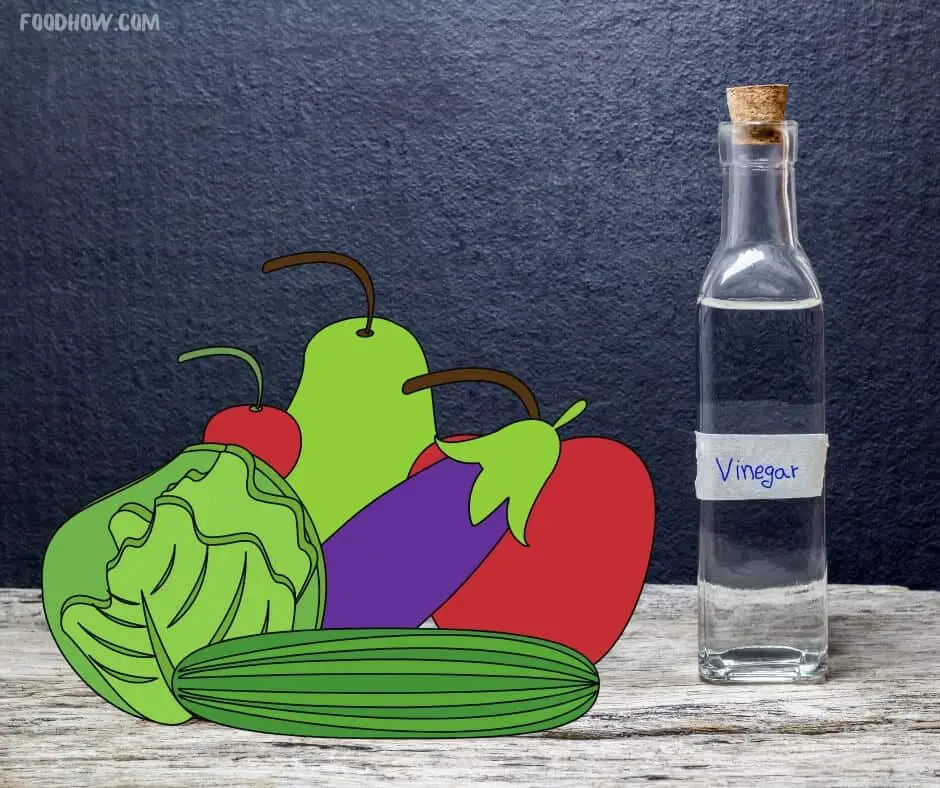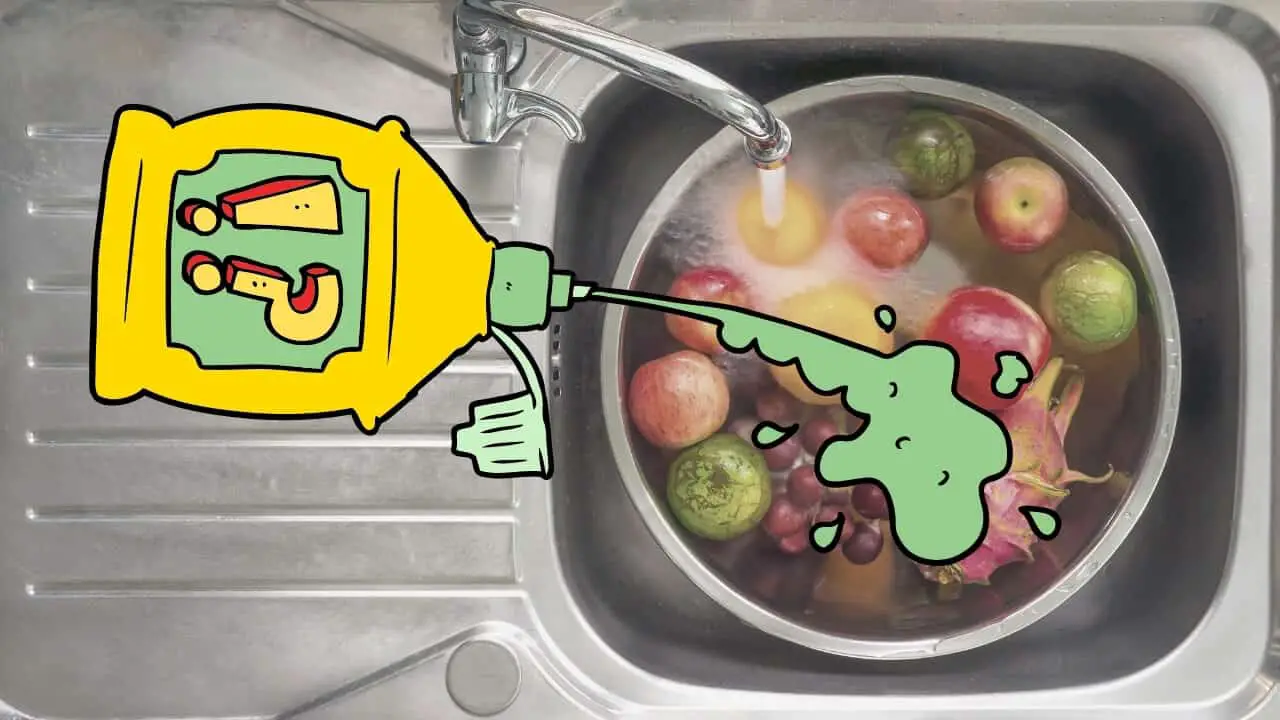We certainly live in unprecedented and worrisome times. The recent ‘pandemic’ has put all of us into a state of hyper-awareness when it comes to cleanliness and sanitation.
Making sure that you and your family are not only well-nourished but also protected from some of the unseen dangers of the world is a reasonable goal, but what precautions should we be taking when bringing home fruits and vegetables from the grocery store or farm stands?
After all, if you are anything like me, you are well aware that even if you use a so-called ‘no-contact’ delivery service, that head of broccoli and bag of oranges at your doorstep has probably been touched by quite a few hands before it finds it’s way to the kitchen counter.
Even under normal circumstances – pandemic aside – the FDA estimates that 48 million people are sickened by food contaminated with harmful germs each year.
Why Wash Fruits And Vegetables Before Eating?

You are probably well aware that bacteria and viral contaminants can be found just about everywhere. The grocery store, of course, isn’t exempt from this unfortunate reality – although we should still be grateful for the extra precautions that stores and employees have taken to keep everything clean and hygienic.
Even so, our food goes on a long journey before it finds its way to the display shelves of our local grocers.
Most bacteria that can be harmful to consumers on produce are found in residual soil that wasn’t fully washed away before being shipped. Outbreaks of salmonella, E. Coli, and Listeria have all been linked to contaminated produce. Porous fruits like berries and leafy greens present a higher risk for contamination than denser fruits and vegetables.
Not only will washing your fruits and veggies protect you from pathogens that could seriously ruin your day, but a nice rinse can also remove pesticide residues, waxes, and other industrial contaminants that have no place at your dinner table.
Chlorine Wash For Vegetables – Good Or Bad?

Technically speaking, a heavily diluted bleach (chlorine) water solution is effective at ridding your produce of harmful germs – so long as care is taken to prepare the solution correctly and not too strong.
Some people have completely missed the memo about what an appropriate amount of bleach actually entails or what is the right bleach to use. (Do not use color-safe bleaches and scented chlorine).
According to the CDC, ever since the pandemic was first reported in January, the cases of accidental poisoning via cleaners and disinfectants have spiked by 20% compared to the year prior. Among the 45,000+ cases of disinfectant poisonings reported between January and March 2020, 62% of those were caused by the accidental ingestion of bleach. [1]
This again isn’t to say that bleach is strictly speaking always dangerous. Many people use it and chances are if you’ve gotten any take-out at a restaurant lately, then you’ve probably consumed some produce that was rinsed with mild bleach water.
However, I’m not a fan of this method because I feel as if it is overkill and too easy to accidentally use too much. In my humble opinion – backed by science mind you- water works just fine if not better than bleach water as long as you follow some simple guidelines.
Washing Produce With Water

All available evidence suggests that plain old-fashioned cool tap water is the most effective means to clean produce. It’s key that when you wash your fruits and vegetables, you first wash your hands with warm soapy water and make sure that your kitchen surfaces are sanitary as well.
It’s best to wash your produce as needed before you use it as opposed to washing it immediately after taking it home.
All produce isn’t created equal either. Items with nooks and crannies like cauliflower, lettuce, and broccoli should be soaked in water for 1 to 2 minutes instead of simply being rinsed. Although, it should be noted that berries should never be soaked but should be rinsed instead.
When rinsing your produce, load your items into a colander and run under the faucet for 15 to 20 seconds with cool water. If you are planning on eating on the run, you can fill a small spray bottle up with distilled water to rinse fruits like apples and pears.
Produce that is homegrown or purchased from a farmer’s market should be given extra attention as they may have more of that microbial soil that we talked about earlier.
After rinsing, allow to air dry on a clean dry kitchen towel.
Read Also: 7 Naturally Antibacterial Disinfectants to Safely Clean Your Kitchen
Vinegar Or Baking Soda?

If cold water seems insufficient, consider opting for something less abrasive than bleach such as vinegar, baking soda, or a natural vegetable wash.
Vinegar is both an inexpensive and effective washing agent that is capable of disinfecting your fruits and vegetables as well as removing some pesticides and waxes that might be clinging to those pears and grapes you’ve got in your refrigerator.
How To Clean Vegetables And Fruits With Vinegar?

- Fill a large bowl with 3 cups water and 1 cup vinegar (I prefer apple cider vinegar but distilled white will do).
- Put your products in the solution.
- Let Soak for 15 to 20 minutes.
- Dump the solution.
- Rinse the produce in a colander or mesh strainer.
- Allow your product to dry on a clean dry towel.
A recent study published by the Journal of Agriculture and Food Chemistry concluded that a gentle baking soda solution was far more effective – in comparison to bleach baths – at removing pesticides from fruits and vegetables with edible skins like apples and squash. [2]
How To Clean Vegetables And Fruits With Baking Soda?

- Wash your hands.
- Clean and sanitize your sink or bowl.
- Fill it with cold water.
- Add 1-3 teaspoons of baking soda.
- Add your fruits and veggies to the bath.
- Let soak for 12 to 15 minutes.
- Scrub harder items with a vegetable brush or a clean cloth.
What Is Veggie Wash?
Another great option for those who are concerned about the cleanliness of their fruits and vegetables is investing in an inexpensive and natural veggie wash such as the one below.
Veggie Wash, by Beaumont Products, is an all-natural food-safe cleaner that cuts through dirt, chemicals, and waxes leaving your fruits and vegetables just as beautiful, delicious, and healthy as nature intended.
Benefits Of Veggie Wash
- Removes agricultural chemicals that aren’t washed off by water alone.
- Washes off coated wax on your vegetables and fruits.
- Safely cleans off handling residue that is found on both organic and standard vegetables and fruits.
Veggie Wash Ingredients
- Water
- Potassium Oleate (Potassium salt)
- Decyl Glucoside (Natural, non-ionic surfactant)
- Limonene (Oil extracted from the peels of citrus fruits)
- Citrus Aurantium Dulcis (Orange peel oil)
- Helianthus Annuus (Sunflower seed oil)
- Rosmarinus Officinalis (Rosemary herb leaf extract)
- Potassium Sorbate (Food preservative)
As you can see, the veggie wash is made from citrus and herbal extracts, and organic compounds so you don’t have to worry about feeding your family food that has undergone harsh chemical treatment.
And although I still think that water alone is sufficiently suited to clean produce, a veggie wash such as this one can give you that added layer of peace of mind without busting the budget or compromising your standards.
The best thing about this solution -besides its efficacy – is that it is affordable. Usually, my 1-gallon supply is capable of lasting 6-8 months. A little bit can go a long, way, and it is remarkably easy to use.
How To Use Veggie Wash?
- Mix 1/4 cup or 3 tbsp of Veggie wash with water in the sink or large bowl.
- Soak and move your produce for 30 seconds.
- Place produce in a mesh strainer or salad spinner and rinse with water. Rinse thoroughly under running water.
- Dry on a clean dry kitchen towel.
It’s as simple as that. Soak and swish artichoke, cauliflower, strawberries, lettuce, broccoli, and spinach.
You can also load up a spray bottle of the stuff and give your produce a generous spray. I recommend that you spray firm produce like cucumber, squash, peppers, apples, grapes, tomatoes, potatoes, and so on.
Spray and rub the solution over your fruit or vegetable for 30 seconds and then give it a thorough rinse. Allow to air dry after rinsing just like you did with the vinegar and baking soda washes.
Veggie wash is ideal for organic or standard fruits or vegetables and it has a three-year shelf life, so even if you’re the kind of person that doesn’t eat a lot of veggies – your secrets are safe with us- you can be assured that whenever you do, your food will be germ and chemical-free.
No doubt, your family’s health, and well-being is your top priority. Fortunately, you don’t have to cut any corners or resort to abrasive – and potentially deadly – chemicals to make sure that the food you eat is safe to consume.
DO NOT use it on mushrooms tho because of their porous skin. Read here what is the best way to clean and store mushrooms.
Final Thoughts
Given the current state of affairs, it’s important to remember that there is no evidence to suggest that food items such as fruits or vegetables or food packaging are capable of transmitting viruses.
However, if you are concerned about contamination of your produce, wash your hands before preparing your meals, and thoroughly rinse your produce before using it.
If you aren’t sure about using just cool water to clean your fruits and vegetables, avoid using harsh chemicals like chlorinated bleach. Instead, opt for gentler solutions like Veggie Wash, vinegar, or baking soda if you want to go the extra mile.
Veggie Wash covers all the bases. It cuts through dirt, chemicals, and waxes and leaves your fruit and vegetables tasting better than ever. You will be surprised by what a drastic change thoroughly cleaning your produce will have on the flavor of your food and the quality of your life.
Read Also: Here is How To Chop Vegetables Without a Knife. (Fast and Easy!)


